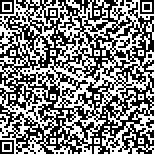下载中心
优秀审稿专家
优秀论文
相关链接
摘要

随着精细化监测的需求,中高空间分辨率的地表反照率产品逐渐成为气候模型的主要输入。目前,中高空间分辨率反照率产品的验证主要基于地表站点的通量塔观测数据,区域机载飞行数据的验证依然相对较少。因此,本文基于区域机载数据验证Landsat反照率产品。针对内蒙古自治区根河森林试验区所获取的机载红外广角双模式成像仪(WIDAS)多角度反射率数据,应用BRDF原型反演算法估算其反照率,分析了应用机载数据验证中高空间分辨率反照率产品的潜力。2016年内蒙古根河森林试验区机载WIDAS飞行多角度观测的可用多角度范围为25°,以前的研究表明BRDF原型反照率反演算法表现出对小观测角度的反照率反演结果的鲁棒性。因此,机载WIDAS反照率在一定程度可用于星载反照率的验证。首先,基于核驱动模型和各向异性平整指数(AFX)提取了试验区4种MODIS二向性反射分布函数(BRDF)原型;然后,将其作为先验知识应用到根河森林WIDAS机载数据的反照率反演中;最后,用WIDAS反照率和单个地面通量塔观测的反照率对Landsat卫星数据的反照率进行初步验证。验证结果表明Landsat反照率与WIDAS反照率结果较为一致,但略有低估,总体均方根误差(RMSE)约为0.02,偏差为0.0057。在多角度观测范围较小时,BRDF原型的反照率反演算法可为星载地表反照率的验证提供了一种有效的验证手段。
Surface albedo is one of the key parameters in the investigation of surface energy balance. Accurate inversion of surface albedo is important for the evaluation on climate change.
For the multi-angle reflectance data of an airborne Wide-angle Infrared Dual-mode line/area Array Scanner (WIDAS) in Genhe Region, Inner Mongolia, the Bidirectional Reflectance Distribution Function (BRDF) archetype-based algorithm was initially applied in forest experimental area. First, we extracted four BRDF archetypes based on the hotspot-corrected linear kernel-driven BRDF models, i.e., RossThickChen-LiSparseReciprocal and anisotropic flat index, in the experimental region of Genhe. Then, we applied these archetypes as a priori knowledge to the albedo inversion of WIDAS airborne data in the forest of the region. Finally, the albedo of WIDAS and the data observed by surface flux tower were used to verify Landsat albedo. In this study, we analyzed the robustness of the BRDF archetype-based algorithm in retrieving small-angle observations in forest experimental area.
The results are as follows. (1) The surface albedo retrieved by the BRDF archetype-based algorithm has high accuracy and stability, and the total Root Mean Square Error (RMSE) of Landsat albedo was approximately 0.02 and deviation was 0.0057. (2) Given the available observation range of WIDAS in the experimental area of Genhe in 2016 was 25°, the BRDF archetype-based algorithm showed robust inversion capability in small observation angles.
Therefore, when the multi-angle observation range was narrow, the albedo of airborne WIDAS retrieved by the BRDF archetype-based algorithm can be in good agreement with that of the Landsat, providing a means to effectively address the problem and validate the satellite albedo.

